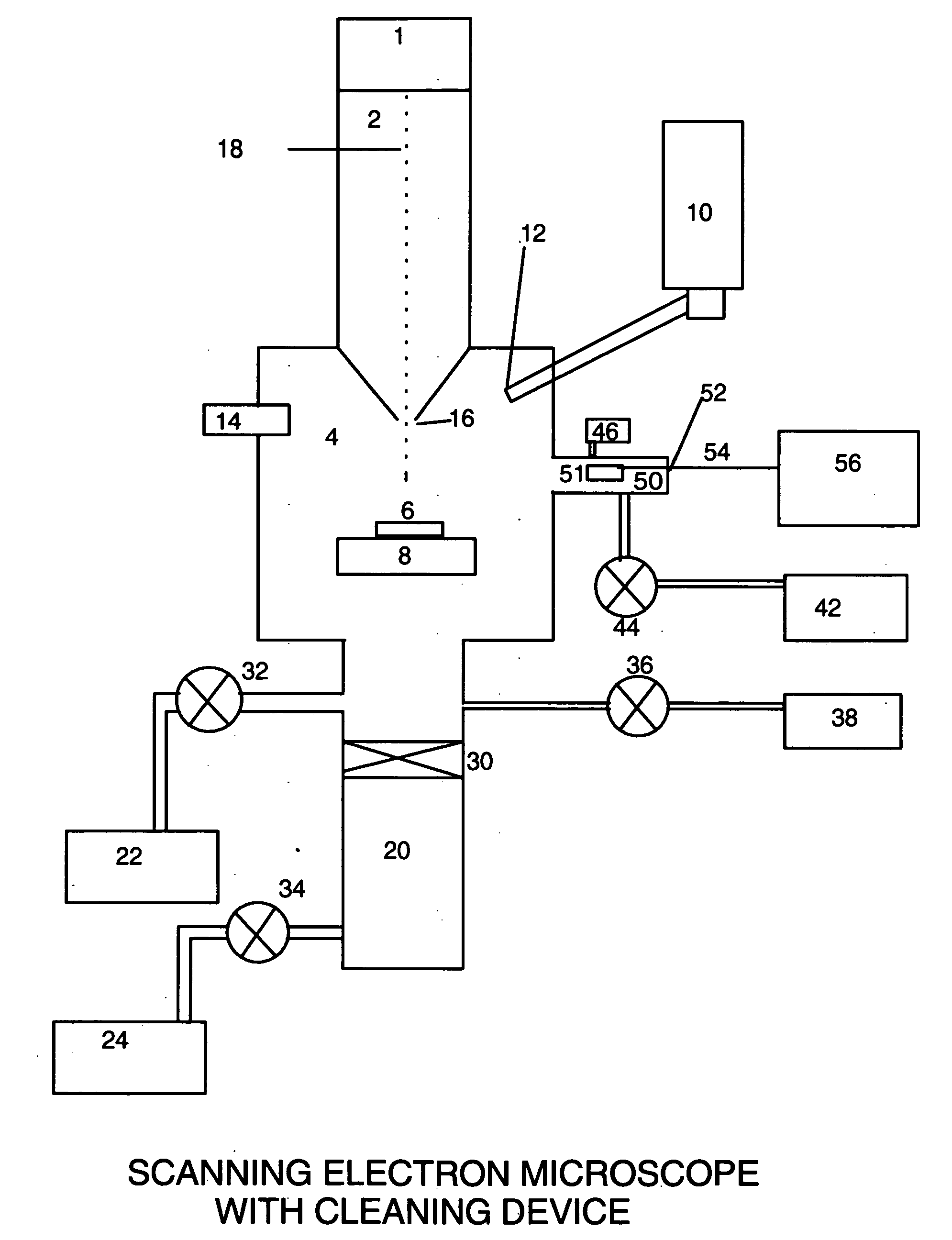Oxidative cleaning method and apparatus for electron microscopes using UV excitation in a oxygen radical source
a technology of oxygen radical source and electron microscope, which is applied in the direction of instruments, heat measurement, machines/engines, etc., can solve the problems of affecting the accuracy of analysis, affecting the scanning area, or losing resolution,
- Summary
- Abstract
- Description
- Claims
- Application Information
AI Technical Summary
Benefits of technology
Problems solved by technology
Method used
Image
Examples
first embodiment
[0049]the present invention method uses a chamber 50 with an interior UV lamp 51. The UV lamp 51 is connected to a power supply 56 through cable 54 and insulated vacuum feedthrough 52 connected to the UV lamp 51. The output of UV lamp power supply 56 controls the power and the temperature of the UV lamp 51. The preferred UV wavelengths are between 193 nm and 150 nm and between 240 nm and 220 nm. At the preferred operating UV wavelengths and pressures of the present method, the Oxygen radicals are produced that flow into the Specimen chamber 4. The UV light may optionally be allowed to enter chamber 4 to activate the hydrocarbons for oxidation. The method of the present invention limits the wavelengths of the UV source so that Nitrogen is not disassociated or ionized, and limits the pressure to below 133 Pa or 1 Torr so that the Oxygen radicals do not react with air molecules to form O3 (Ozone) or N20 molecules by means of three body collisions in significant quantities.
[0050]In the ...
fourth embodiment
[0065]In the invention the UV source is located within the specimen chamber and irradiates said chamber while the Oxygen containing gas flows through the region of the UV source.
PUM
 Login to View More
Login to View More Abstract
Description
Claims
Application Information
 Login to View More
Login to View More - R&D
- Intellectual Property
- Life Sciences
- Materials
- Tech Scout
- Unparalleled Data Quality
- Higher Quality Content
- 60% Fewer Hallucinations
Browse by: Latest US Patents, China's latest patents, Technical Efficacy Thesaurus, Application Domain, Technology Topic, Popular Technical Reports.
© 2025 PatSnap. All rights reserved.Legal|Privacy policy|Modern Slavery Act Transparency Statement|Sitemap|About US| Contact US: help@patsnap.com



